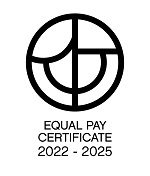Samherji acquires a vessel to catch and conserve live fish
Samherji has invested in a pelagic vessel and is in the process of converting the vessel for groundfish fishing, where it will be possible to pump fish on board and store it alive in specially equipped tanks. This arrangement offers much more flexibility in the handling of the catch and better control of workload on board and in processing on land.
Onboard, this method offers:
- Fish goes into equipped tanks where it is kept alive. This makes it possible to process it later on board or bring the fish ashore alive.
- Fish is bled/gutted and placed in tanks with refrigerated seawater (RSW) for storage.
- Fish is bled/gutted in traditional tanks stored in a cold storage on board.
The method involves catching fish in a traditional bottom trawl, but instead of taking the bag on deck and pour from it, which puts a lot of pressure and stress on the fish, the bag is moved to the side of the vessel, and then the catch is pumped on board with a vacuum pump system. This method handles the catch much better and is well known from the salmon farming industry for transfer of live fish.

Norwegians have been implementing and using this technology to a considerable extent in recent years and have built up a regulation framework around it. In Norway, it is assumed that if the fish are kept in net pens for less than 12 weeks a fish farming licences is not required, as the process is not actual aquaculture but only a form of storage. The regulations in Norway focus on animal welfare, i.e. that the fish is not put under unnecessary stress and that there must be facilities onboard to sort and weigh all the catch. The operator must be audited by the Norwegian Food Safety Authority (Mattilsynet) to obtain a permit to catch and preserve live fish. As there is no increase in biomass, there is minimal pollution resulting from the preservation of the fish with this method, therefore regulations are less complicated when compared to traditional aquaculture. After four weeks in net pens, the fish must be offered feed (whole fish, e.g. capelin), after 12 weeks, the same rules apply as for the aquaculture of wild fish. If the plan is to keep the fish for more than 12 weeks, a special permit can be applied for to store the fish for up to 20 weeks.

We at Samherji are convinced that there are many opportunities for progress in using this method. The time between catch and delivery to land processing could be shortened from 3-5 days down to 0-12 hours. Security of supply for land processing is also significantly increased. Storing the fish in cages can compensate for short-term fluctuations when shortages occur due to bad weathers or fluctuations in catch. The possibilities of entering new markets with fresh fish will also increase due to longer shelf life of the product and a more stable supply. We have studied this methodology in Norway, and Samherji's staff have put considerable effort into familiarizing themselves with various research projects related to this.

This fishing arrangement has not been practiced in Iceland, and the regulations are therefore not in place. Such regulatory framework concerns, among other things, the weighing and storage of live catch. Our vision is that in the future, vessels will generally be equipped in such a way that they can deliver part of the catch alive. For this development to take place, it is necessary to amend regulations and adapt them so that the fisheries sector will be able to advance in this direction.
It is necessary for the fisheries sector and the Icelandic government to work together to develop regulations to manage such fisheries and thus promote improved animal welfare and value creation in groundfish processing. Samherji intends to use the new vessel as a full scale experiment to develop this concept, to succeed we need and hope for good cooperation with authorities.
| Heiðdís Smáradóttir Fish Physiologist Project- and quality Manager, Samherji Fish Farming |
Hjörvar Kristjánsson Mechanical Engineer Project Manager, Samherji Ships Operations |
 |
 |


